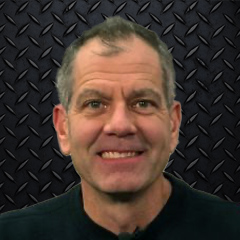
Things to Know Before Your Handlebar Project
Mike RoenHandlebars are the most common Harley-Davidson upgrade after exhaust upgrade. Whether you're wanting to change your handlebars for comfort, looks, or a combination of both, this is an upgrade that can be involved and costly. Parts and labor can commonly be between $1,200 to $2,000.
A set of handlebars can be as little as $200 or upwards of $800. In most cases, price reflects quality. It is important to choose handlebars that are aesthetically pleasing but will also allow you to ride for long durations comfortably.
In this video, Mike gives us a good checklist of parts, procedures, and things to keep in mind when preparing to upgrade the handlebars on your Harley-Davidson.
• Mock up the handlebars. Verify, one more time, that the set you have is going to be what you are looking for.
• Before disassembly, make sure to test all handlebar switch functions. Make sure everything is working properly: turn signals, front brake switch, horn, etc.
• If front-turn signals are on the handlebars, determine if the signals will be relocated to the front end. This might change how many wires will be routed through the handlebars. *Signal wires will need to be routed through the bottom left & right side switch housings if signals are to be mounted on the handlebars. Drilling the bottom housings will be required.*
• Inspect the pre-drilled harness holes. Usually the edges will be sharp and need to be filed. If the holes are not open enough for the harness, use a die grinder with a rasp to open the holes more. Use a fine file on the edges to smooth over.
• Handlebar riser bushings should be upgraded to premium poly riser bushings or solid bushings.
• It is important to use a solid handlebar riser top clamp. The premium clamps can be expensive, but they are extremely important for rider safety. Also pay attention to the handlebar diameter at the clamping section. Most bars reduce to 1". Some bars are 1.25" or 1.50" and will need a completely different risor & clamp assembly.
• Check hand grips for proper fitment. Mainly the right side grip needs to be free without binding. Cheaper Chinese bars are often loaded with excess chrome or paint that will adversely affect fitment.
• Mock up the switches and front master cylinder and clutch perch. Make sure there will not be any unsightly gaps. Also, check for proper fitment of the front master cylinder. Again, some of the cheaper handlebars (China again) do not allow for proper fitment of the master cylinder. This is a big deal. In this case, the bars should be returned. You do not want to run into this problem after the wires have already been routed through the bars.
• If the motorcycle is throttle by wire, verify that the twist grip sensor fits correctly inside the handlebar and at the handlebar bar end notches.
*Harley sells a twist-grip sensor that has continuous wires without plug interruption. This makes the TGS easier to handle. You can also eliminate the green plug yourself, but pay special attention to wire locations. It can be a little confusing at first.*
• Prior to removing the individual wires from their corresponding plug, it is important to record the wire's color and numbered position within the plug.
Mike also reviews proper cutting, stripping, and soldering for wire extension.
Check out some of our multi-hour Handlebars 101 Video Project for even more tips!
